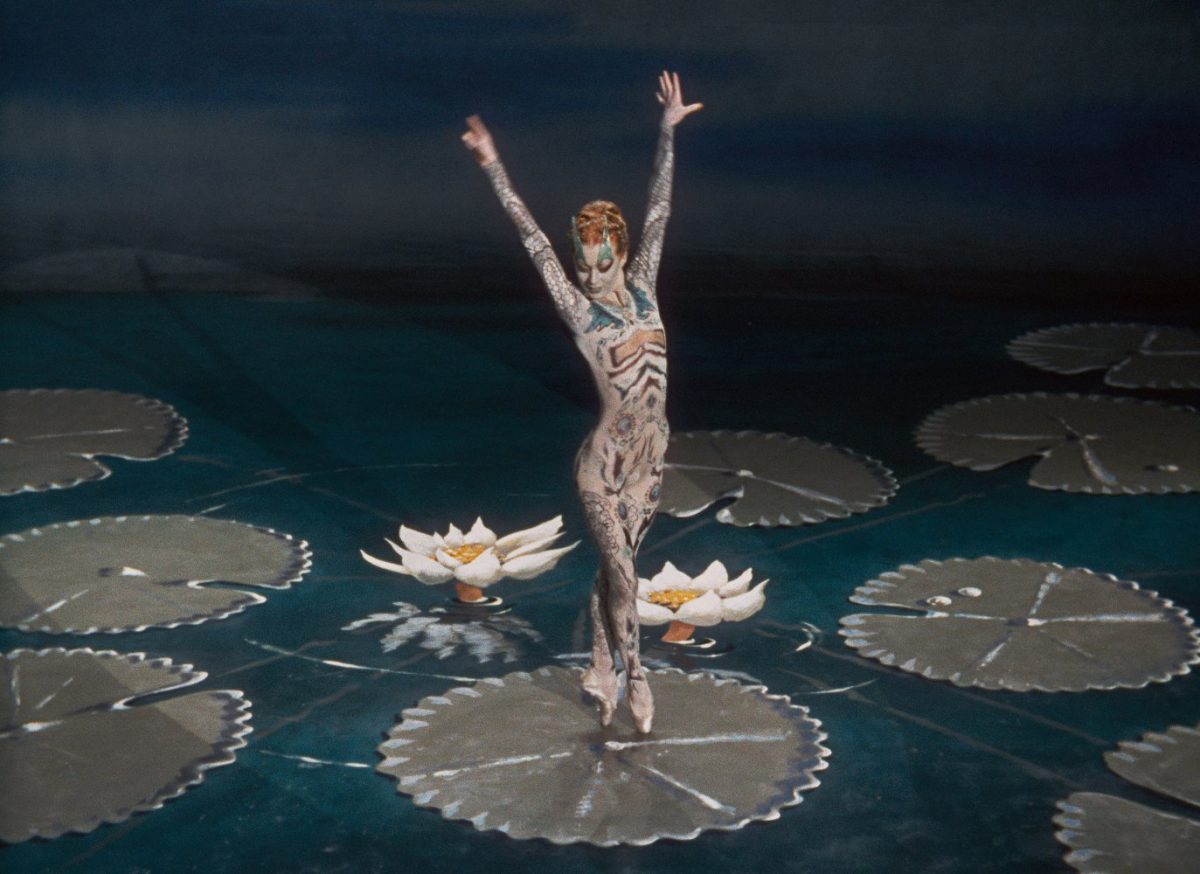The Tales Of Hoffmann

Michael Powell, Emeric Pressburger
UK – 1951
Screenplay: Dennis Arundell (English libretto), Michael Powell, Emeric Pressburger
Cinematography: Christopher Challis
Production: The Archers Vega Film Productions
Language: English
Duration: 138 min
Color: Color
Synopsis: The great storyteller Hoffmann is losing himself to drink. His rival in love, Councillor Lindorf, claims that Hoffmann knows nothing of the heart, and goads him into revealing his three great loves—each of which is destroyed by a villain who bears an uncanny resemblance to Lindorf… First Hoffmann tells of his infatuation for the mechanical doll, Olympia, destroyed by the inventor Coppélius. Next comes the courtesan Giulietta, who declines his adoration in favor of jewels from the magician Dappertutto. And finally, gentle Antonia is forced to sing to her death by the wicked Doctor Miracle. His stories finished, Hoffmann rouses from his drunken stupor only to find that this time Lindorf has made off with Stella, Hoffmann’s latest love—but the Muses compel him to transform his heartache into art.
Notes:
Romantic obsession and the doomed attempts to grasp it is the core of Michael Powell and Emeric Pressburger’s vivid adaptation of Jacques Offenbach’s opera The Tales of Hoffmann. In making the picture, Powell and Pressburger (the legendary British filmmaking team known as The Archers) built upon the fantasy elements of their earlier films, particularly The Red Shoes, to create an entirely unique atmosphere in which to mount the stories of poet ETA. Hoffmann as seen through Offenbach’s eyes.
To mount this dark, operatic fantasy, The Archers enlisted production designer Hein Heckroth to create a lush arena where song and dance could convey the narrative to the camera. Heckroth had won an Academy Award for his work on The Red Shoes, and his bold, rich design for Hoffmann would earn him another nomination. Heckroth’s plans required an expert cinematographer, and The Archers chose frequent collaborator Christopher Challis, who had previously shot The Small Black Room, Gone to Earth and The Elusive Pimpernel for them. As each act of the film was designed around a single primary color, Challis sought to convert the lighting effects of a staged musical or opera to the cinema frame. He noted that in live theater, the human eye could read the subtlest of shadings, and low light was often used to achieve distance effects. (An unlikely fan of musical performance films, cult horror filmmaker George A. Romero has commented on this particular adaptation’s influence on his own films.) After determining that a wide-ranging use of light would be essential for Hoffmann, the cinematographer set up one of the most elaborate arc-light grids in the history of British cinema. Indeed, Challis noted in his autobiography (“Are They Really So Awful?”) that at the time of production, no other British film had ever used as many lamps for the Technicolor palette. This extraordinary lighting is realized in a pleasing picture transfer resulting from the nearly pristine source material from the British Film Institute’s restoration internegative. The monaural audio track has also been treated to reduce age-related defects. The Archers’ unique fantasy is certainly a landmark in their approach to storytelling, musical performance, cinematography and production design.
Notes adapted from Hemphill, Jim, David E. Williams, and Kenneth Sweeney. “DVD Playback.” American Cinematographer 87, no. 3 (March 2006): 14-18.
















